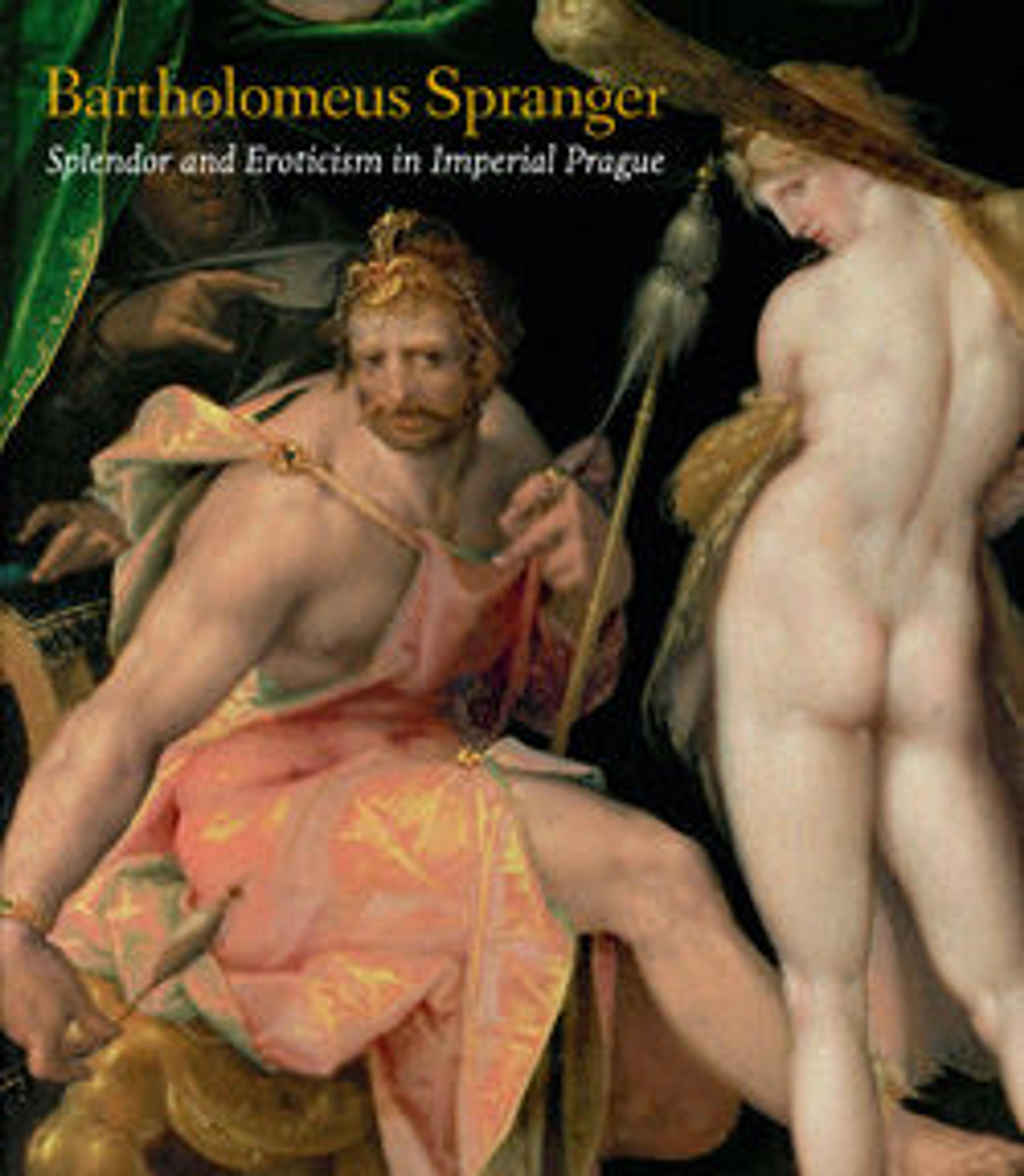Minerva Leading Hercules and Scipio to the Temple of Fame
Around 1590, Jan Muller began making engravings after designs by Bartholomeus Spranger, the court painter to the Emperor Rudolf II of Prague. Rudolf, who reigned from 1576 to 1612, surrounded himself with artists, writers, scientists and mathematicians, who prized novelty and invention above all else.
For example, this relatively small composition by Spranger, translated into engraving by Muller, has puzzled collectors and scholars at least since the first great catalogues of prints were published in the early nineteenth century. Its subject, apparently, has no precedent in the visual arts. Minerva, the Roman goddess of wisdom and a symbol of virtue, leads two male figures through a rocky landscape. She is identifiable by two mythological figures decorating her armor, a sphinx on her helmet and the head of a gorgon just visible on her breastplate. On her left is Hercules, a demigod, son of Jupiter and a mortal woman and one of the great heroes in Roman mythology. He can be identified by his club and the lion skin he wears wrapped around him. The third figure is Scipio Africanus, a Roman general and hero of the Second Punic War, which was fought against Carthage in the third century BC. This figure is often mistakenly described as Mars, although he has none of the god’s attributes and the name Scipio is included in the Latin inscription below the image.
Minerva leads the two heroes past a licentious group of men and women who are partly hidden at the right of the composition. She will instead turn up a rocky path, leading up to the temple of eternal fame and glory. The elegant poses of the figures and plentiful nudity along with the complicated subject matter, would certainly have pleased the court in Prague.
For example, this relatively small composition by Spranger, translated into engraving by Muller, has puzzled collectors and scholars at least since the first great catalogues of prints were published in the early nineteenth century. Its subject, apparently, has no precedent in the visual arts. Minerva, the Roman goddess of wisdom and a symbol of virtue, leads two male figures through a rocky landscape. She is identifiable by two mythological figures decorating her armor, a sphinx on her helmet and the head of a gorgon just visible on her breastplate. On her left is Hercules, a demigod, son of Jupiter and a mortal woman and one of the great heroes in Roman mythology. He can be identified by his club and the lion skin he wears wrapped around him. The third figure is Scipio Africanus, a Roman general and hero of the Second Punic War, which was fought against Carthage in the third century BC. This figure is often mistakenly described as Mars, although he has none of the god’s attributes and the name Scipio is included in the Latin inscription below the image.
Minerva leads the two heroes past a licentious group of men and women who are partly hidden at the right of the composition. She will instead turn up a rocky path, leading up to the temple of eternal fame and glory. The elegant poses of the figures and plentiful nudity along with the complicated subject matter, would certainly have pleased the court in Prague.
Artwork Details
- Title:Minerva Leading Hercules and Scipio to the Temple of Fame
- Artist:Jan Muller (Netherlandish, Amsterdam 1571–1628 Amsterdam)
- Artist:After Bartholomeus Spranger (Netherlandish, Antwerp 1546–1611 Prague)
- Publisher:Harmen Jansz. Muller (Netherlandish, Amsterdam ca. 1540–1617 Amsterdam)
- Date:ca. 1591
- Medium:Engraving: New Holl.'s third state of four
- Dimensions:Sheet: 9 1/2 × 6 5/16 in. (24.1 × 16 cm)
- Classification:Prints
- Credit Line:The Elisha Whittelsey Collection, The Elisha Whittelsey Fund, 1949
- Object Number:49.95.1833
- Curatorial Department: Drawings and Prints
More Artwork
Research Resources
The Met provides unparalleled resources for research and welcomes an international community of students and scholars. The Met's Open Access API is where creators and researchers can connect to the The Met collection. Open Access data and public domain images are available for unrestricted commercial and noncommercial use without permission or fee.
To request images under copyright and other restrictions, please use this Image Request form.
Feedback
We continue to research and examine historical and cultural context for objects in The Met collection. If you have comments or questions about this object record, please contact us using the form below. The Museum looks forward to receiving your comments.
